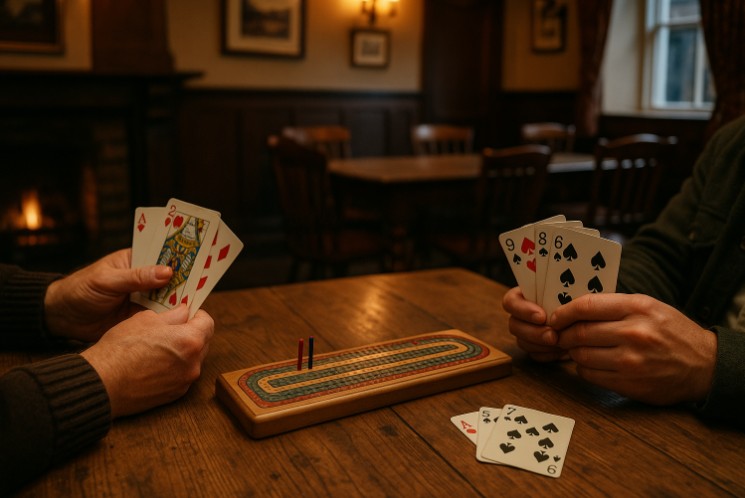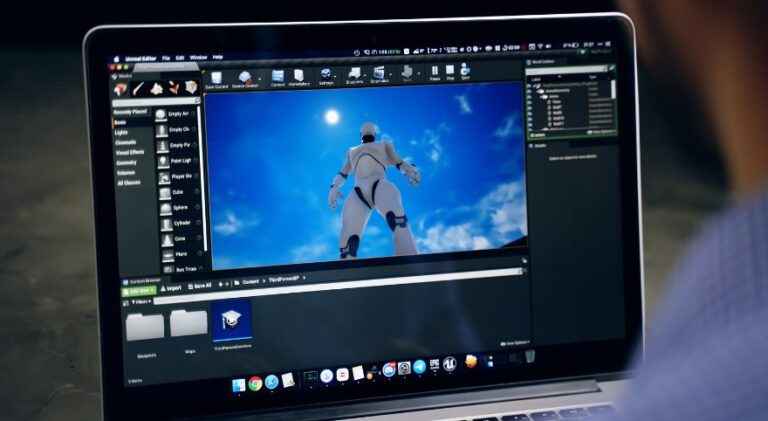Pictionary is a widely popular drawing and guessing game that blends creativity with teamwork. First introduced in 1985, it has become a staple in households, classrooms and social gatherings across the UK.
Whether you’re planning a game night or a team-building session, understanding the rules and variations can enhance your experience.
This guide explores how to set up and play Pictionary, covering the official rules, team formats and innovative variations suited for modern and traditional play alike.
What is Pictionary and Why is it So Popular?

Pictionary is a team-based drawing game that has stood the test of time in the world of party and family entertainment. Developed in 1985 by Robert Angel, the game involves players drawing images to represent words or phrases while their teammates try to guess what the drawing represents.
It blends visual creativity with fast thinking, making it a high-energy, interactive experience.
The name “Pictionary” is a portmanteau of “picture” and “dictionary”, which captures the essence of the game. Since its debut, it has sold millions of copies worldwide and has been adapted into over 45 languages.
The popularity stems from its simplicity and the fact that it can be enjoyed by players of all ages regardless of artistic ability. Whether it’s part of a family game night or a group activity at a corporate retreat, Pictionary encourages laughter, collaboration and quick thinking.
Its availability in various formats, including traditional board games, digital apps and virtual play, has helped it remain relevant across generations.
How Do You Set Up a Game of Pictionary?
Setting up a traditional game of Pictionary involves a few essential components. Most boxed versions include everything needed, but it’s also easy to prepare your own DIY version if necessary.
You will typically need:
- A game board with marked squares
- A set of Pictionary cards containing word prompts
- A one-minute timer, usually sand-based
- Drawing pad or paper and pens
- A die and pawns for team movement
The board has squares marked with different letters or icons that correspond to specific categories. When a team’s pawn lands on a square, the drawer must select the word on their card that matches the square’s category.
Below is a sample of the official Pictionary categories and their meanings:
| Category Symbol | Description |
| P | Person, Place or Animal |
| O | Object |
| A | Action |
| D | Difficult |
| AP | All Play (every team draws) |
To begin, players form two or more teams. Each team selects one member to start as the drawer. The starting team rolls the die, moves their pawn accordingly, and selects a card. The drawer looks at the category and starts drawing the matching word while teammates guess aloud.
The use of a timer ensures each round is kept fast-paced. Typically, the first team to guess the word correctly gets to roll the die and move ahead. The first team to reach the finish square and guess a final word correctly wins the game.
What Are the Official Rules of Pictionary?
Pictionary is governed by a clear set of rules designed to keep the gameplay fair and engaging. These rules apply to both physical and digital formats.
Gameplay is conducted in turns. Each turn consists of the following sequence:
- The team selects a drawer for the round
- The drawer picks a card and views the word that matches their current square
- A one-minute timer is started
- The drawer begins to sketch the word using only visual elements
- Teammates guess out loud until the time runs out or they guess correctly
- A correct guess allows the team to roll the die and move their pawn forward
If the team fails to guess correctly, the turn ends and play moves to the next team.
There are several strict rules that must be followed during drawing:
- No letters, numbers or symbols may be used in the sketch
- No spoken clues or verbal hints
- No gestures, pointing or miming
- Only the current drawer may interact with the drawing
In an “All Play” round, one player from each team draws the same word simultaneously. All teams guess at the same time, and the team that guesses the word first gets to roll and take the next turn.
The simplicity of the rules is part of what makes Pictionary accessible. It allows players to focus on quick thinking, creativity and collaboration.
How Do You Play Pictionary with Teams?
Team-based play is the most common and engaging format of Pictionary. It is structured to promote group participation and healthy competition.
Each team rotates through members to take turns drawing. A typical round involves the following sequence:
- The team selects a drawer for the turn
- The drawer draws based on the word from the card corresponding to their current square
- The rest of the team attempts to guess within the time limit
- A correct guess earns a die roll and a chance to move forward
In team play, collaboration and communication are essential. Although players are not allowed to speak or mime during their drawing turn, the team dynamic plays a crucial role in guessing success.
Some important strategies for team gameplay include:
- Assigning drawers based on strengths, such as someone good with animals drawing the P category
- Using familiar themes or shorthand sketches that the team has practiced
- Staying vocal and energetic to generate as many guesses as possible within the time frame
The structure of the team setup brings in an element of camaraderie and humour, especially when drawings don’t go quite as planned.
What Are the Different Game Variations of Pictionary?

Pictionary has evolved far beyond its original board game format since its debut in 1985. Thanks to its flexible rules and broad appeal, the game has been adapted into multiple variations that suit different age groups, technologies, and environments.
Whether you’re looking for a modern twist, a digital option, or a version tailored for children or classrooms, there’s a Pictionary variant to match your needs.
Each version maintains the fundamental concept of drawing and guessing, but introduces new rules, formats, or tools that enhance the gameplay experience in different ways.
These variations not only expand the accessibility of the game but also ensure that it continues to feel fresh and exciting for both new and returning players.
Pictionary Air: Drawing in the Digital Space
Pictionary Air is one of the most notable modern adaptations. Designed for the tech-savvy generation, this version replaces the traditional pen and paper with a digital stylus that lets players draw in the air. The drawing is captured via a smartphone or tablet camera and displayed on a connected screen, such as a smart TV.
Key Features of Pictionary Air:
- Players draw in the air using a light-up pen
- Drawings appear in real-time on a screen via the app
- The drawer can see the team’s reactions while drawing
- Timers, scoring, and word lists are managed digitally
Pictionary Air adds a performance aspect, as the drawer must face the audience while drawing, much like in charades. This version is ideal for younger audiences, families, and parties looking for a fun, tech-integrated experience.
Pictionary Junior: Designed for Children
Pictionary Junior is tailored specifically for younger players, generally aged 7 and up. The rules are simplified, and the word lists are adapted to be more age-appropriate. It’s perfect for children who are still developing vocabulary and drawing skills.
Distinctive Features:
- Simplified categories such as animals, toys, and everyday objects
- Larger drawing boards and simpler card layouts
- Often includes images instead of just words to support early readers
This version makes Pictionary accessible to younger children without compromising the fun or competitive element. It’s commonly used in classrooms and family settings.
Online Pictionary: Remote Play Anywhere
With the rise of virtual interaction, online versions of Pictionary have become increasingly popular. These versions are especially useful for people who want to play remotely with friends or colleagues.
Popular Online Platforms:
- Skribbl.io: A free browser-based game that randomly assigns words and allows up to 12 players per room. Players take turns drawing while others guess in real time.
- Drawize: Offers both public rooms and private group play, with categories ranging from general knowledge to themes like movies or animals.
- Pictionary App by Mattel: Available on iOS and Android, this app version is more stylised and includes animations, power-ups, and multiplayer features.
Online platforms usually include built-in timers, scoring, and automated word generation. They eliminate the need for physical materials and are especially useful for virtual game nights, classrooms, or distributed team-building activities.
No-Board or DIY Pictionary: Customised for Any Setting
The no-board or do-it-yourself (DIY) version of Pictionary is popular because of its simplicity and adaptability. Whether you’re at a picnic, in a classroom, or at a gathering without access to the official game, you can set up a DIY version with minimal effort.
Essentials for DIY Pictionary:
- Blank paper or whiteboards for drawing
- A timer (phone or stopwatch)
- A custom-made or printed word list
- A scoring method (points or a homemade board)
DIY Pictionary allows players to personalise the word lists according to the theme or event. For example, a Halloween party version might feature words like “vampire,” “pumpkin,” and “haunted house.”
This variation is especially effective in educational environments, as teachers can use subject-specific vocabulary for learning through play.
Here is a table comparing different Pictionary variations based on format and player suitability:
| Version | Best For | Tools Required | Unique Features |
| Classic Pictionary | Family game nights | Board, cards, timer, pencils | Original gameplay with physical components |
| Pictionary Air | Tech-friendly groups | App, device, Air pen | Augmented reality drawings on screen |
| Pictionary Junior | Young children | Kid-friendly board, cards | Simplified rules and categories |
| Online Pictionary | Remote players | Internet, device | Browser/app play with built-in features |
| DIY Pictionary | Classrooms, custom play | Paper, timer, custom words | Fully customisable for any event or theme |
Themed Pictionary Sets
Some versions of the game introduce specific themes or editions, tailored to particular interests or occasions:
- Pictionary: Harry Potter Edition: Uses characters, objects, and spells from the wizarding world
- Holiday Pictionary: Ideal for Christmas, Easter, or Halloween gatherings with themed prompts
- Educational Editions: Focus on science, history, or language, designed for classroom learning
These themed sets allow players to engage more deeply with subjects they enjoy or are learning about, making Pictionary a flexible tool for both entertainment and education.
Custom House Rules and Variants
In addition to official variations, many players introduce house rules or tweaks to keep the game fresh. Some popular custom variations include:
- Speed Rounds: Reduce the timer to 30 seconds for a greater challenge
- Silent Guessing: Players can only nod or shake their head to indicate guesses, increasing difficulty
- Reverse Pictionary: The guesser must draw based on teammates’ verbal clues
These variations keep the game engaging for long-time fans or during marathon game nights.
Overall, the adaptability of Pictionary is one of its greatest strengths. Whether played with physical cards, drawn in mid-air with a smartphone, or on a whiteboard with homemade prompts, the game remains rooted in creativity, quick thinking, and shared laughter.
How Can You Make Your Own DIY Pictionary Game?

Creating a homemade version of Pictionary can be a fun and economical alternative to purchasing the official game. It allows you to customise categories and difficulty levels depending on the players involved.
Start by preparing a collection of words divided into categories such as:
- Person/Place/Animal
- Object
- Action
- Difficult
- All Play
You can write these on index cards or print them in table form. Ensure that each card has one word for each category. Include a random symbol or label to indicate “All Play” cards.
A quick way to source words is by using online random word generators or themed vocabulary sets. For example, you could create a “Movie Night” edition with film titles, characters and scenes as prompts.
Keep the gameplay consistent with the original rules. Set a timer, rotate drawers and record correct guesses and turns manually. For scoring, consider allocating one point for each correct guess, or use a basic board drawn on paper to move team markers forward.
DIY versions are especially effective in classrooms, parties or team-building settings where flexibility is needed.
What Are the Best Tips to Win at Pictionary?

Although Pictionary is known for being a casual and light-hearted game, there is definitely room for strategy and skill, especially for players looking to be more competitive.
Winning at Pictionary doesn’t require artistic talent alone success depends on clear communication, quick thinking, and an understanding of how your teammates interpret visuals.
Whether you’re playing at a party, during a family game night, or in a corporate team-building session, following a few proven strategies can significantly increase your chances of winning.
Drawing Strategies That Make a Difference
Good drawings in Pictionary are not about detail or beauty; they are about clarity and speed. The aim is to convey the idea behind a word or phrase in the simplest and fastest way possible. Here are several drawing strategies that work effectively:
- Use simple shapes and figures: Squares, circles, triangles and stick figures are your best friends. Complex illustrations can confuse your team and waste time.
- Focus on key features: If you’re drawing a “policeman,” add a badge, hat or baton. Small details that symbolise the word make a big difference.
- Break down the word visually: For compound words like “snowman,” draw snow first, then a man figure. Representing parts separately can help teammates guess more quickly.
- Indicate movement or direction: Use motion lines or arrows to show action. For example, to draw “running,” sketch a person and add speed lines or a trailing leg.
- Avoid unnecessary details: Don’t waste time shading, colouring or decorating. Pictionary is about speed, not aesthetics.
- Cross out wrong guesses or distractors: If your teammates are guessing something completely off-track, draw a big “X” or cancel mark to guide them away from that idea.
Guessing Techniques to Boost Accuracy
Guessing is just as important as drawing in Pictionary. Effective guessers pay attention to the drawer’s focus, notice repeated or emphasised shapes, and keep their guesses flowing until the timer runs out.
Some useful guessing tips include:
- Say everything that comes to mind: The game rewards fast guessing. Don’t hesitate to shout out ideas, even if they seem off. One word may trigger the right guess in a teammate’s mind.
- Think categorically: If you know you’re guessing a “Person/Place/Animal,” narrow your focus and avoid guessing objects or actions.
- Watch the drawer’s hand: Where the drawer focuses often hints at the most important part of the sketch.
- Use context clues: Try to relate what’s already been drawn to familiar concepts or common phrases.
- Stay vocal and energetic: A fast-paced atmosphere encourages more intuitive guesses and keeps the team motivated.
Team Coordination and Communication
Winning in a team setup often depends on how well the players communicate and read each other. Developing a shared language or shorthand can dramatically improve performance over time.
Ways to enhance coordination include:
- Rotate drawers strategically: Choose who draws based on the word category. If someone is better at visualising abstract ideas, they might be a better fit for the “Difficult” category.
- Establish drawing styles: Over time, regular teams develop recognition of certain symbols or images. For example, a simple outline of a globe might consistently represent “world” or “international”.
- Stay positive and encouraging: Supportive energy keeps the team’s morale high and reduces frustration during tough rounds.
- Practice before competitive rounds: If you’re playing in a structured setting or tournament, it helps to practise drawing common words or phrases beforehand.
Managing the Timer and Pacing the Game
Time is a crucial factor in Pictionary. The pressure of a 60-second limit can lead to rushed sketches or chaotic guessing, but with the right approach, it can work to your advantage.
Tips for better time management:
- Start with the easiest part of the word: Help your teammates get a quick foothold before diving into more complex details.
- Use the first 10 seconds to sketch fast and bold: Create a clear opening image that narrows down the possibilities immediately.
- Don’t panic if guesses are off: Calmly shift to the next most recognisable clue. A second sketch might succeed where the first fails.
- Keep drawing even if the guesses are wrong: Avoid freezing or pausing while waiting for a correct answer. Every second should be used to reinforce your visual clue.
Common Mistakes to Avoid
Even experienced players fall into common traps that can cost them the round. Avoiding these mistakes can give your team a distinct edge:
- Drawing too much detail: Elaborate sketches take time and confuse the guessing team.
- Focusing on artistic perfection: Pictionary rewards clarity, not artistic ability.
- Ignoring the category: Guessers often overlook the importance of the word category, leading to off-topic guesses.
- Freezing under pressure: If you’re drawing, don’t let a lack of correct guesses stop you—keep going, change your approach, or start a new idea.
Word Familiarity and Pattern Recognition
Some words appear more often in Pictionary games, especially in standard or junior editions. Becoming familiar with frequently used words and knowing how to illustrate them quickly can save valuable time.
Here is a table of commonly used Pictionary words and visual hints you can associate with them:
| Word | Drawing Hint |
| Airplane | Wings, window, clouds |
| Book | Rectangle with lines or title |
| Cat | Pointy ears, whiskers, tail |
| Dance | Stick figure with musical notes |
| Fireman | Helmet, hose, flame |
| Doctor | Stethoscope, cross symbol, syringe |
| Sleep | Bed shape with Z’s above head |
| Football | Oval ball, goal post, player helmet |
Memorising a few default illustrations or shortcuts for these types of words helps in both drawing and guessing.
Balancing Fun and Focus
Lastly, while strategic play can help you win, the heart of Pictionary lies in having fun. Maintaining a balance between competitiveness and enjoyment is key.
Laughter often arises from terrible drawings or wild guesses, and these moments make the game memorable regardless of the final score.
Winning becomes easier with practice and familiarity, but the best Pictionary teams are those that enjoy the process of playing together just as much as winning itself.
Conclusion
Mastering Pictionary involves more than just artistic flair. By understanding the rules, categories, and game dynamics, players can enjoy an engaging and collaborative experience.
Whether you’re using the original board game or a DIY setup, the game’s flexibility allows it to be enjoyed in countless settings.
From families to colleagues, it’s an ideal choice for bringing people together through fun, laughter, and quick thinking. Use this guide to create memorable game sessions and sharpen your skills each time you play.
FAQs About How to Play Pictionary
How many players are needed to play Pictionary?
The game requires at least four players, divided into two teams, but it can accommodate larger groups for more excitement.
Can children play Pictionary?
Yes, Pictionary is family-friendly and suitable for children, especially with junior versions or custom word lists tailored for age appropriateness.
What can I use instead of a game board?
You can track progress with paper, a homemade board, or even a whiteboard with marked squares.
How long does a typical Pictionary game last?
Games usually last 30 to 60 minutes, depending on the number of players and how quickly teams guess correctly.
Are there digital versions of Pictionary?
Yes, games like Pictionary Air and online platforms allow digital drawing and gameplay for virtual parties or remote play.
Is drawing skill necessary to play Pictionary?
Not at all. In fact, the worst drawings often lead to the funniest and most memorable moments.
What is the difference between “All Play” and normal rounds?
In All Play, all teams draw and guess the same word at once, competing for the first correct guess. Normal rounds involve just one team drawing and guessing.







